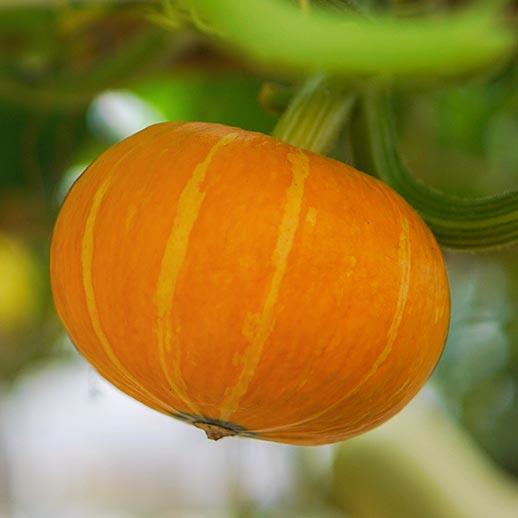
CURCUBITA PEPO
Pumpkin
Digestive Support
Immune Support
Men
WHAT IS IT?
Pumpkins are the harbingers of fall. Thoughts of them conjure jack-o-lanterns, pies; even a pumpkin spiced late comes to mind. Pumpkins are one of the most popular
WHAT IS IT USED FOR?
Pumpkin seed oil has appreciable amounts of essential fatty acids, 47% of linoleic acid (omega-6) and nearly 0.5% of alpha-linolenic acid (omega-3), which are the precursors of
More products with Pumpkin
Active Consituents
Seeds: cucurbitin and carotenoids, including lutein, carotene, and beta-carotene
Oils: unsaturated fatty acids, including 47% linoleic acid, 29% oleic acid, 14% palmitic acid, and 8% stearic acid, vitamin E,
Parts Used
Seed oil
Additional Resources
1.) Younis YM, Ghirmay S, al-Shihry SS. African Cucurbita pepo L.: properties of seed and variability in fatty acid composition of seed oil. Phytochemistry 2000;54:71-5.
2.) Durante M, Lenucci MS, Mita G. Supercritical carbon dioxide extraction of carotenoids from pumpkin (Cucurbita spp.): a review. Int J Mol Sci 2014;15(4):6725-40.
3.) Michael, Orsolek D., George L. Greaser, and Jayson K. Harper. "Pumpkin Production." Agricultural Alternatives (2000). Penn State College of Agricultural Sciences, 19 Feb. 2008
Important Precautions
If you have a medical condition or take pharmaceutical drugs please consult your doctor prior to use.
Disclaimer
This information in our Herbal Reference Guide is intended only as a general reference for further exploration, and is not a replacement for professional health advice. This content does not provide dosage information, format recommendations, toxicity levels, or possible interactions with prescription drugs. Accordingly, this information should be used only under the direct supervision of a qualified health practitioner such as a naturopathic physician.
Why Gaia Herbs?
Plant-Powered
Harnessing traditional wisdom, delivering Nature's vitality
Potent
Full spectrum formulas for an herb's full array of beneficial compounds
Purity Tested
All products are screened for pesticides, microbes & heavy metals
Transparent
Know what's in your supplement— Meet Your Herbs to learn more